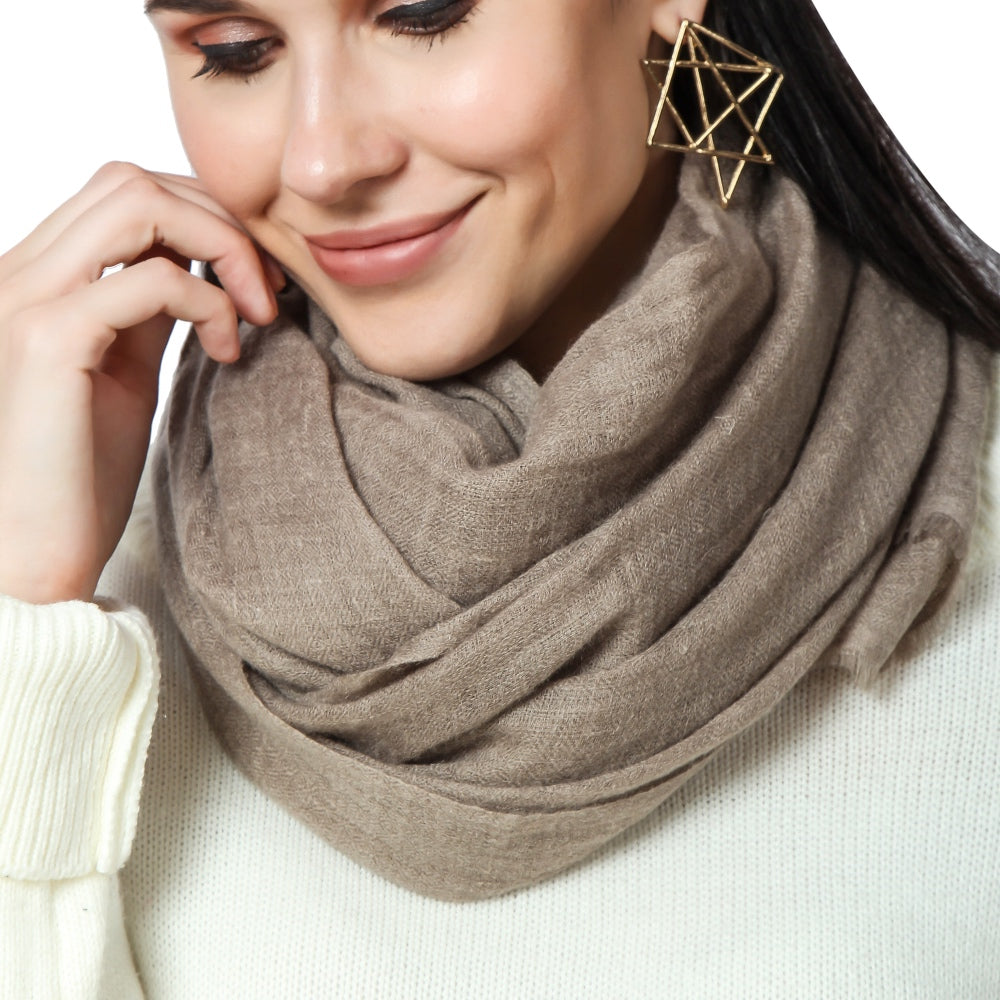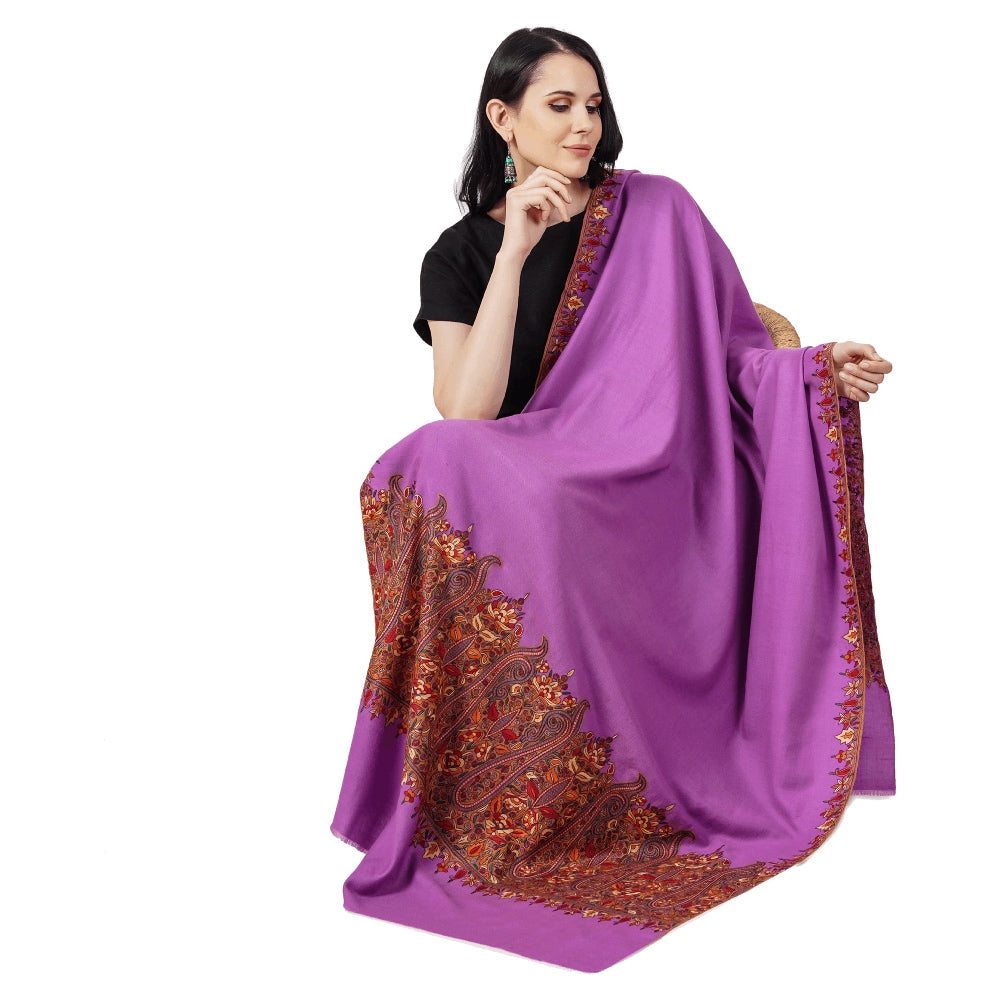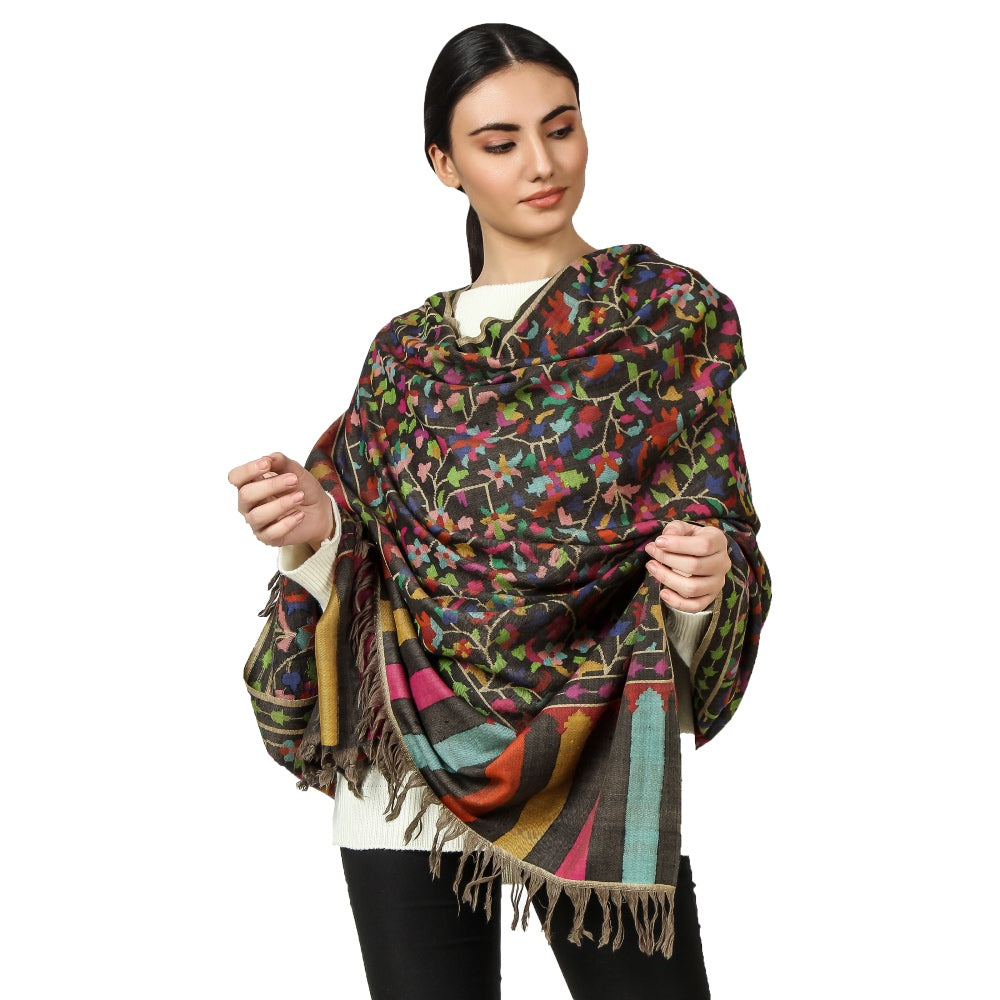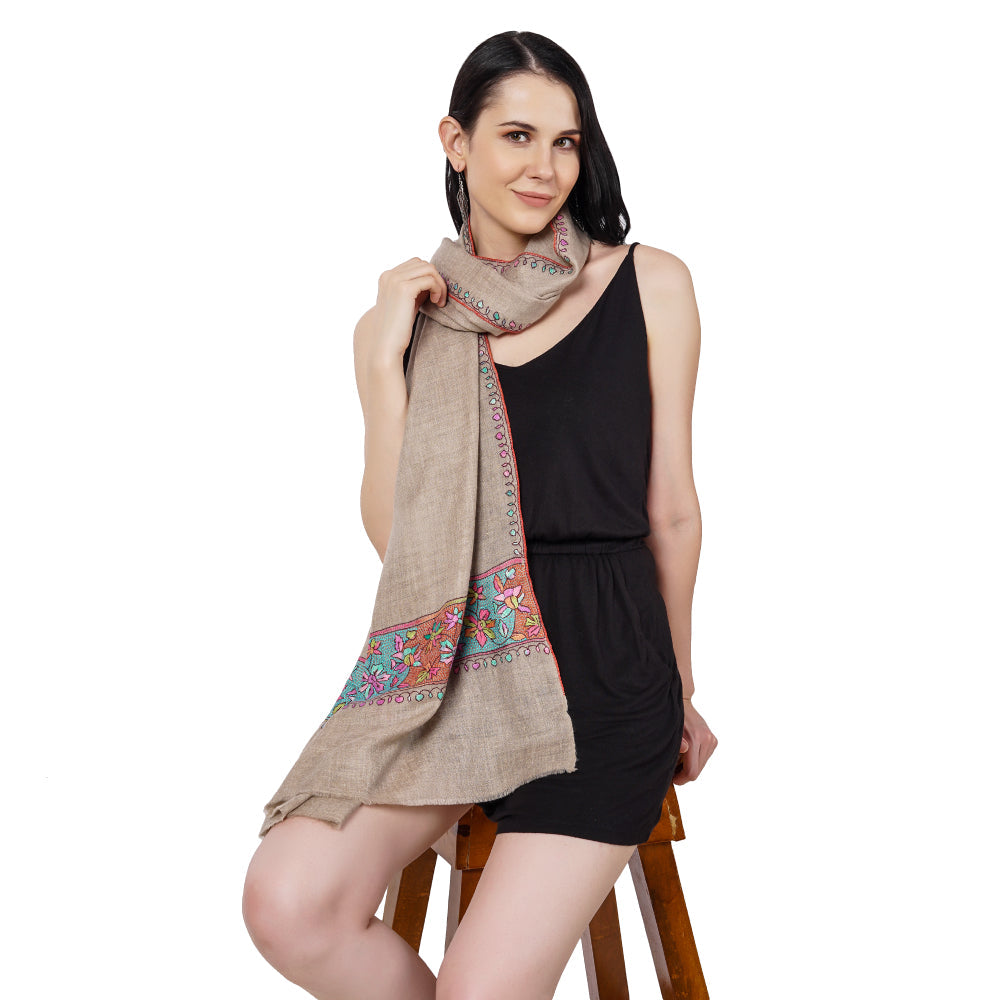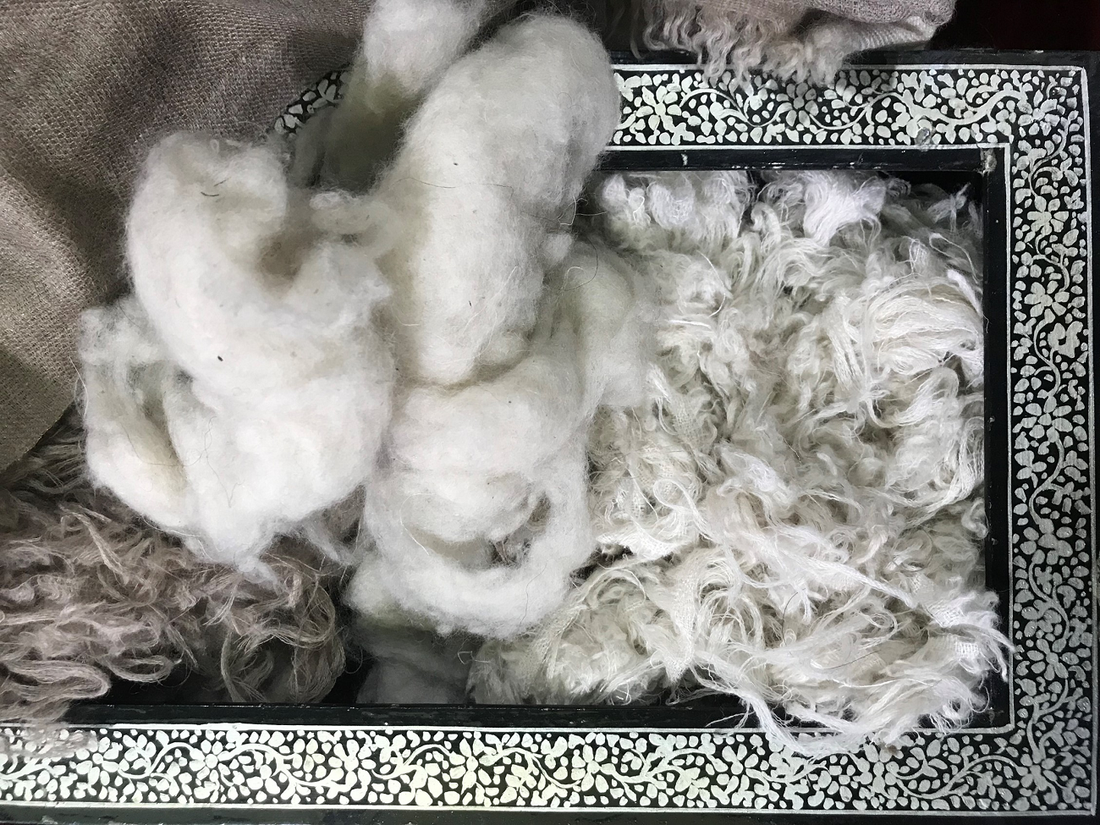
How to know if a Pashmina is pure?
Share
Pashmina is a fine type of wool that comes from the undercoat of certain breeds of Himalayan mountain goats. It is known for its exceptional warmth, softness, and luxurious texture, and has been a prized material for centuries, particularly in the Kashmir region of India and Pakistan.
However, not all pashmina products are created equal. There are many imitations and blends available in the market that claim to be pure pashmina but are actually mixed with other materials. This is why it is important to know how to identify pure pashmina products, so that you can ensure you are getting the quality and value you are paying for.
By knowing the characteristics of pure pashmina and how to identify them, you can avoid being deceived by sellers who may try to pass off lower-quality materials as the real thing. Moreover, buying and owning a genuine pashmina product can be a source of pride and satisfaction, knowing that you have a high-quality and authentic item that is not only beautiful but also durable and long-lasting. Therefore, it is crucial to have the knowledge and skills to distinguish between real and fake pashmina.

Also read: What is the point of Pashmina
Understanding Pashmina

Pashmina is a type of wool that comes from the undercoat of certain breeds of mountain goats, primarily found in the Himalayan region of South Asia. The wool is known for its exceptional warmth, softness, and fine texture, which makes it highly valued and sought-after. The term "pashmina" is derived from the Persian word "pashm," which means wool.
There are different types of pashmina available in the market, and they can vary in quality and price. The purest form of pashmina is made from the wool of the Changthangi breed of goats, which are native to the high-altitude regions of Ladakh in India and Tibet in China. This type of pashmina is also known as "Changra," and it is the softest and most luxurious of all the types.
Other types of pashmina include "Pashmina Silk," which is a blend of pashmina and silk, and "Pashmina Cashmere," which is a blend of pashmina and cashmere wool. These blends can also be of high quality, but they are not considered pure pashmina.
To identify pure pashmina, there are certain characteristics to look for. Pure pashmina should be lightweight, soft, and warm to the touch. It should also have a fine texture and a matte finish, without any sheen or shine. The color of pure pashmina can range from ivory to beige, and it should not have any visible fibers or hairs sticking out. Additionally, pure pashmina should not have a scratchy or rough feel, and it should drape elegantly when worn.
Also read: Where is Pashmina Goat found
III. Identifying Pure Pashmina

Testing the warmth and softness of pashmina :
To identify pure pashmina, there are several methods you can use. First, test the warmth and softness of the pashmina by holding it against your skin. Pure pashmina should feel warm and soft, and it should not cause any itching or irritation. Next, check the weave and thickness of the pashmina. Pure pashmina should have a tight weave and a uniform thickness, without any irregularities or gaps in the fabric.
Observing the color and texture
Another way to identify pure pashmina is to observe its color and texture. Pure pashmina should have a matte finish and a fine texture, with no visible sheen or shine. The color should be consistent and even, with no patches or discolorations.
Examining the fringe or tassels
Examining the fringe or tassels is also an effective method for identifying pure pashmina. Pure pashmina should have delicate and even tassels or fringe, with no knots or loose threads. The tassels or fringe should be made from the same material as the main body of the pashmina.
Burn test method
Finally, the burn test method can be used to identify pure pashmina. Cut a small piece of the fabric and burn it. Pure pashmina should smell like burnt hair, and the ash should be light and easily crumble between your fingers. Synthetic fibers or blends, on the other hand, will smell like plastic when burnt and the ash will be dark and hard.
By using these methods, you can identify pure pashmina and avoid being misled by counterfeit or low-quality products.
Also read: What is the point of Pashmina
IV. Caring for Pashmina

Pashmina is a delicate and luxurious material, and proper care is essential to maintain its quality and longevity. Here are some tips on how to take care of your pashmina:
Storing Pashmina: When not in use, pashmina should be stored in a cool, dry place, preferably in a drawer or a closet. Avoid exposing pashmina to direct sunlight or heat, as this can cause the fibers to weaken and fade. To prevent moth damage, store your pashmina in a sealed container or bag with mothballs or cedar chips.
Cleaning Pashmina: Pashmina should be cleaned sparingly and only when necessary. Before washing, check the care label for any specific instructions. In general, pashmina can be hand washed in cool water using a gentle detergent, and then rinsed thoroughly. Avoid twisting or wringing the fabric, as this can cause damage to the fibers. Instead, gently squeeze out excess water and lay the pashmina flat to dry. Do not hang the pashmina to dry, as this can cause stretching and distortion.
Alternatively, you can have your pashmina professionally dry cleaned. Be sure to inform the dry cleaner that the fabric is pashmina, and request that they use a gentle, non-toxic solvent.
Tips on how to take care of Pashmina: To prevent snagging or pilling, avoid wearing jewelry or accessories that can rub against the fabric. When folding or storing your pashmina, be gentle and avoid creasing the fabric. If wrinkles do appear, you can steam the pashmina lightly to remove them. Ironing is not recommended, as it can cause damage to the fibers.
By following these care tips, you can ensure that your pashmina remains soft, beautiful, and long-lasting for many years to come.
Also read: How to clean Pashmina Scarf
V. Conclusion
In summary, pashmina is a luxurious and delicate material that is highly valued for its warmth, softness, and beauty. However, it is important to ensure that the pashmina you purchase is pure and of high quality, in order to fully enjoy its benefits.
There are several methods for identifying pure pashmina, including testing its warmth and softness, checking the weave and thickness, observing the color and texture, examining the fringe or tassels, and using the burn test method. By following these tips, you can avoid buying counterfeit or low-quality pashmina.
In addition, proper care is essential to maintain the quality and longevity of your pashmina. This includes storing it in a cool, dry place, cleaning it sparingly and gently, and avoiding wearing jewelry or accessories that can snag the fabric.
In conclusion, investing in pure pashmina is worth the effort, as it provides not only warmth and comfort, but also a sense of luxury and elegance. By following the tips provided in this article, you can identify and take care of pure pashmina, and enjoy its beauty for years to come.

